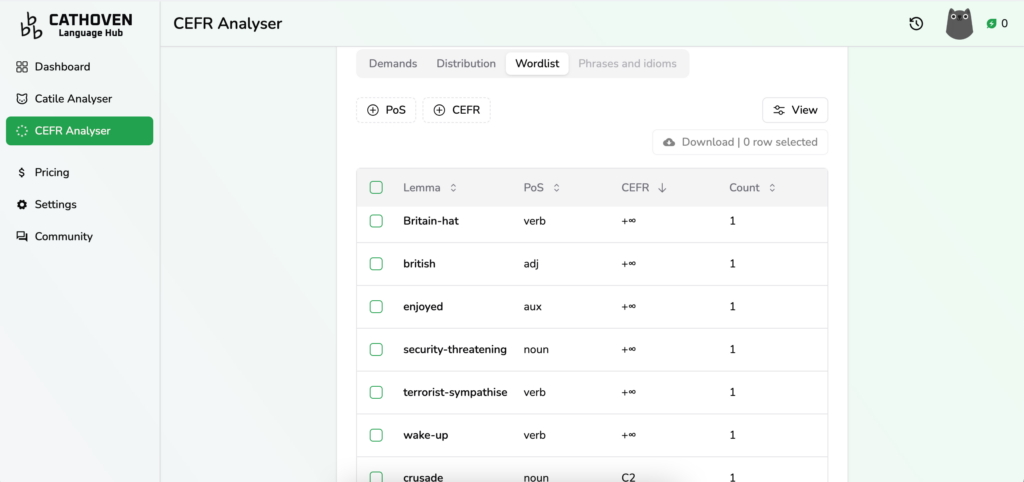With children now spending an average of 85 minutes per day on YouTube compared to just 45 minutes on television, there has never been a better time to bring YouTube into your language classroom with Cathoven’s video analyser tools. What’s more, the breadth of content is beyond count. You have an endless catalogue of potential lessons, authentic material and topics to fit any personality. All that remains is to create a lesson from your chosen video, but that can be time-consuming. Fortunately, Cathoven is here to help.
How Can Cathoven Bring YouTube into Language Classroom?
Rome wasn’t built in a day, and Cathoven has brand new features on the way. Our upcoming Exercise Creator tool invites users to create activities for text and – you guessed it – video links. Once you’ve chosen a video from YouTube to use in your classroom, head over to the Cathoven Language Hub and click on the “Exercise Creator” located in the sidebar. Click the video tab and simply copy and paste a link into the YouTube video link box, as shown below:

What Exercises Can I Create With Cathoven?
Before you click “create” and spend your precious catnips, consider the type of classroom activity you want to make. We have a list of comprehension exercises to choose from:
- multiple choice questions
- multiple choice cloze questions
- short answer questions
- true/false
- true/false/not given
Want your students to have some guardrails to help them along? Then multiple choice questions might be right for you. If you want them to read for gist, create a true/false activity. And finally, why not really test their analysis abilities and have them write short answer questions? Rest assured, Cathoven’s superior AI technology not only generates these questions but also provides explanations for answers through its unique comprehension of spoken language.
Unlike other educational tools on the market today, Cathoven's modern and powerful AI transcribes videos without needing subtitles.
Once that’s done, toggle with the advanced settings until you are happy and click “create”. Instead of wasting more time glued to your computer screen thinking of exercises, you are now free to make yourself a steaming cup of coffee while Cathoven generates materials.

When you return to your desk, cup of coffee in hand, you should have a list of comprehension exercises waiting for you. Copy or print them for your classroom. Why not download them for future lessons, too? Take a look at these short answer questions for a thrilling Sherlock Holmes story:

How Do You Check the CEFR Level Of A YouTube Video?
But what if you think creating a comprehension exercise is “putting the cart before the horse” and you want to check the difficulty of your video first? What if you want to list important and interesting vocabulary? Good news: Cathoven is ready to do all of that and more in its hub. In fact, Cathoven includes detailed CEFR analysis, especially for spoken language.

Paste your video link into the CEFR Analyser, toggle your settings and watch the words light up with colour, showing their level. Then you can copy your transcript and paste it into our other analysis and generation tools, such as our upcoming Level Adaptor or Exercise Creator.

Which Videos Work In the CEFR Analyser Tool?
You can copy and paste all YouTube videos under three minutes long (while the tool is in beta) into the Cathoven CEFR analyser. Check out this analysis of YouTuber Tom Scott’s educational video on a weird, innovative elevator built in Hanover, Germany. As you can see, the level mapping is detailed:

What Else Does the CEFR Analysis Tool Do?
In-depth information isn’t limited to the video’s CEFR level mapping, which is just the tip of the ESL iceberg. You can also study a detailed:
- vocabulary breakdown
- verb form breakdown
- clause breakdown
- and we also plan on releasing a prosody breakdown
How Do I Use The Vocabulary Breakdown Tool?
You can break down the vocabulary into a wordlist or phrase and idiom list ranked by difficulty. If needed, you could introduce more topical vocabulary before reading or listening classroom activities begin, aiding comprehension. It also highlights how frequently a word is used, which is valuable in showing the importance of certain words. Remember, to understand 75% of what native speakers say, learners only need to recall 1000-1200 words.

How Do I Use The Verb Form And Clause Breakdown Tool?
Do you need to teach the present perfect tense, for example? The verb form breakdown allows you to select all instances of the present perfect featured in a YouTube video. These can be used to show authentic instances of the target grammar. Authentic language is vital when language teaching because it shows us how the feature is really used.

Teaching clause structure is also important, but it can be tedious to create examples. You can save your time finding examples by sourcing them from a YouTube video and looking at a clause breakdown made in Cathoven, whether it’s a relative clause or something else. Check out this noun clause breakdown of a David Cameron speech:

Why Should Teachers Use Cathoven For Video Analysis?
Whether it’s a graded vocabulary list or a colour-coded transcript, tables, graphs, comprehension questions or even the average sentence length of a video, Cathoven has the tools needed to bring YouTube into your language classroom. Our time-saving tools can help you with lesson and material preparation, saving you from ESL burnout.
What’s more, you can get started on Cathoven’s modern, powerful language hub for free!
